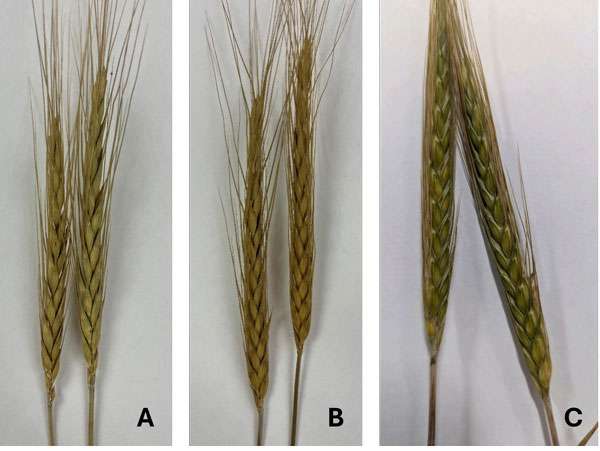
By MIKE COURSON
Great Bend Post
More of a novelty than an issue, and not uncommon but not real common. That's how Dr. Allan Fritz, professor of agronomy at Kansas State University, described a new wheat hybrid recently found in three Kansas fields in Dickinson and Marion counties and in south-central Kansas. The wheat and triticale crossing was not an intentional one.
"They're going to be pretty rare, so it's going to be just a handful of individual plants," Fritz said. "Part of it is the triticale that's involved, we think it was an octoploid, which means it basically has eight basic sets of chromosomes. A lot of the triticales are actually hexapolids, so they only have six."
Fritz said there is myotic instability with octoploids that can result in sterility in the triticale. The wheat-rye cross contains 56 chromosomes, 42 of which are exactly like those in the wheat to make hybridization possible. Labs indicate the seeds produced by the hybrid are 60 percent viable so there is a small chance it could negatively impact wheat production in the future.
"I don't see it as any real threat," said Fritz. "I don't see it as a potential huge weed problem, necessarily. It's more of a contamination in a seed-production field. For our seed producers, I would say just be paying attention walking those fields, being aware of some taller plants that are out there that look funny and spending the effort to rogue those out so they don't get propagated in the wheat."
The hybrid looks like wheat but is taller with a flatter and more narrow head. There are only about three seeds per plant. Experts say producers who suspect a plant is a hybrid can grab a handful and pull. Producers are encouraged to notify the Kansas Crop Investment Association of any suspected hybrids.
"Ideally, they don’t want it mixed in with other harvested crops," said Stacy Campbell, crop protection agent with K-State Research and Extension - Cottonwood District. "It could cause a dockage at the elevator. So looking for it, since those plants are a little taller than wheat and then hand-pulling those plants is the best remedy. For example, cereal rye is being used as a cover crop after corn is harvested, especially on sandy soils. If the cereal rye is detected in road ditches or in fields, so it does not contaminate wheat and other crops, growers need to also go and pull those plants."




